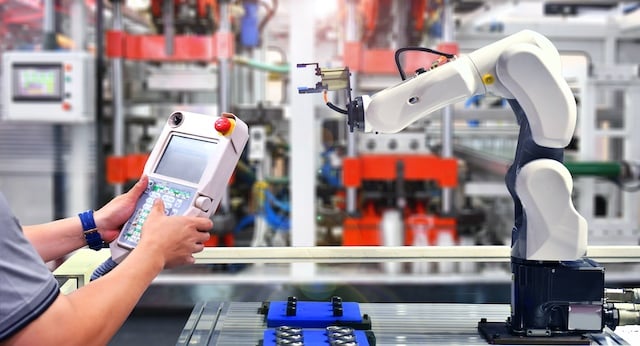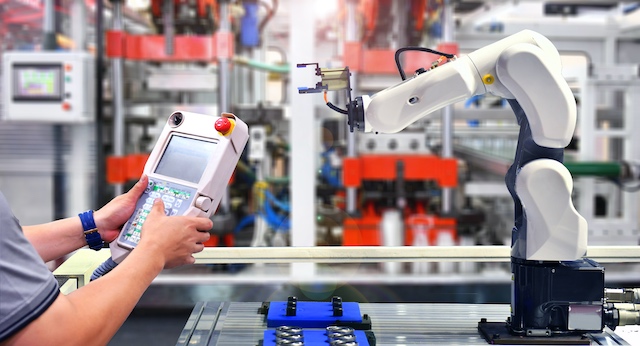
Smart factories and robots might sound like something from a 1980s science-fiction blockbuster, but the future is now and these innovative technologies are changing the manufacturing industry.
Automation is now being implemented in companies across the world. According to statistics from the Automation Technology Expo (ATX), held in February 2020 in California, the smart manufacturing market is projected to be worth $12 billion by 2025, with a 10.9% estimated compound annual growth rate in the robotics segment in the period from 2019-2025.
The keynote panel at ATX this year focused on the ‘tech disruptors transforming the robotics revolution’, discussing issues such as funding these innovative projects, next-generation human-robot interfaces, and applications for smart manufacturing solutions.
Collaborative robots
Rather than replacing their human counterparts, some of the most inventive uses of robotics in manufacturing are ‘cobots’, or collaborative robots. These have been developed in the last decade, giving human operators the chance to work alongside robotic interfaces to maximise production.
Cobots, when implemented correctly, can help to reduce the human input needed on a production line. While this can be argued to be ‘putting people out of work’, in fact it could be just what the industry needs to fill the widening skills gap in the manufacturing industry. By placing the right cobots alongside skilled human workers, essential work can be done faster and with more precision.
Cobots have a number of uses in a manufacturing environment including, according to Forbes, picking, packing and palletising; welding; assembling items; handling materials; and inspecting products for quality.
Cobots are currently one of the most extensively used forms of automation systems in factories. They are more cost-effective; building a fully automated factory from scratch requires huge investment, but implementing choice cobots into an existing factory environment is far more accessible.
Digital factories
Factories will also benefit in 2020 from the widespread rollout of 5G services. 5G offers significantly faster speeds than 4G (up to 100 times faster) and with a very low latency. This will allow for real-time data transfer in factories without the need to use wires or rely on Wi-Fi hotspots.
What this means in practical terms is that equipment can use smart sensors for up-to-the-second reporting that is truly wireless and portable. Information such as machine problems, output, stock levels and much more can be reported live and instantly to factory managers, speeding up processes within the entire production line.
These smart sensors can be used in conjunction with the latest AI technology, which can help to analyse the massive amounts of data collected by the sensors and send the right information to the right places in seconds. The smart factories of the future will run seamlessly, with less bottlenecks in production, enabling them to increase output and meet demand.
The other massive advantage of these developments in smart manufacturing and robotics, is that it all helps factories become more sustainable. There is significantly less wastage, through efficient and streamlined processes.
We’ll be keeping an ear to the ground for all of the latest smart factory updates in the coming year here at Corrotherm, so be sure to bookmark this blog to stay up to date.
 Smart manufacturing and robotics
Smart manufacturing and robotics